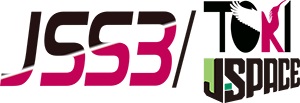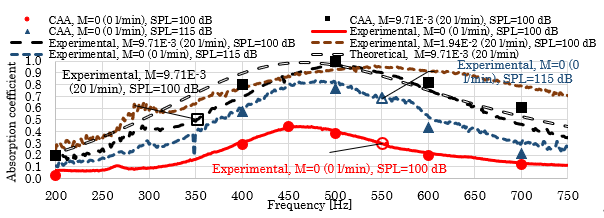Research on Techniques of Sound Absorbing Liner Analysis
JAXA Supercomputer System Annual Report April 2019-March 2020
Report Number: R19EDA101P01
Subject Category: Aeronautical Technology
- Responsible Representative: Tatsuya Ishii, Aeronautical Technology Directorate, Propulsion Research Unit
- Contact Information: Nobuhiko Yamasaki, Department of Aeronautics and Astronautics, Kyushu University(yamasaki@aero.kyushu-u.ac.jp)
- Members: Soufiane Ramdani, Genki Omagari, Nobuhiko Yamasaki (Kyushu University), Kenichiro Nagai, Tatsuya Ishii
Abstract
The technique to analyze the sound absorbing lines with bias flows, the air flow through porous plate, is to be established and used for the clarification of the physics behind it.
Reference URL
N/A
Reasons and benefits of using JAXA Supercomputer System
The current LES calculation rerquires large computer resources, and in the present fundametal reseearch aiming at the eluciation of pyisical pheenomena, the largest merit is that the researcher can perform the cost-free calculation.
Achievements of the Year
In the study, the CAA using LES is applied to 2-D slit apertures.
Figure 1 shows the results of current CAA, theoretical results, and theoretical results. Models with straight and tapered aperture, and with/without bias flow are discussed. Straight aperture model without bias flow shows the narrow absorption frequency range, whereas the higher and wider absorption range is observed for tapered aperture model. The current CAA model is validated with experimental and theoretical results.
The study also discusses the flow field around the apertures and effect of flow structures around the apertures on the absorption performance of the resonators. Fig. 2 shows the flow field with and without bias flow excited by sound source of 100 and 115 dB. The results indicate that the presence of vortex shedding increases the absorption coefficient. Increases in the sound pressure level intensifies the vortex shedding, thereby leading to a better absorption performance than that for lower sound pressure levels. Additionally, the introduction of a bias flow (which is a method to facilitate the vortex shedding even for lower sound pressure levels) improves the absorption performance.

Fig.2: Non-dimensional vorticity for tapered aperture: a) 500 Hz and 100 dB without bias flow, b) 500 Hz and 115 dB without bias flow, c) 500 Hz and 100 dB with bias flow M = 9.71×10(-3), d) 500 Hz and 115 dB with bias flow M = 9.71 x 10(-3)
Publications
N/A
Usage of JSS2
Computational Information
- Process Parallelization Methods: MPI
- Thread Parallelization Methods: OpenMP
- Number of Processes: 2 – 32
- Elapsed Time per Case: 24 Hour(s)
Resources Used
Fraction of Usage in Total Resources*1(%): 0.01
Details
Please refer to System Configuration of JSS2 for the system configuration and major specifications of JSS2.
| System Name | Amount of Core Time(core x hours) | Fraction of Usage*2(%) |
|---|---|---|
| SORA-MA | 0.00 | 0.00 |
| SORA-PP | 35,289.89 | 0.23 |
| SORA-LM | 269.92 | 0.11 |
| SORA-TPP | 0.00 | 0.00 |
| File System Name | Storage Assigned(GiB) | Fraction of Usage*2(%) |
|---|---|---|
| /home | 104.90 | 0.09 |
| /data | 286.10 | 0.00 |
| /ltmp | 3,906.25 | 0.33 |
| Archiver Name | Storage Used(TiB) | Fraction of Usage*2(%) |
|---|---|---|
| J-SPACE | 0.00 | 0.00 |
*1: Fraction of Usage in Total Resources: Weighted average of three resource types (Computing, File System, and Archiver).
*2: Fraction of Usage:Percentage of usage relative to each resource used in one year.
JAXA Supercomputer System Annual Report April 2019-March 2020



